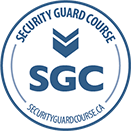In the fast-paced world of security, effective communication is key. As a security guard, you are often the first point of contact in various highly sensitive situations. Whether you are interacting with the public, coordinating with local law enforcement, or de-escalating an agitated person, strong communication skills are essential. A crucial, but often overlooked communication skill is active listening. This post will delve into what active listening is, why it is such a crucial skill for security guards, and provide some practical tips and strategies to help you enhance your own active listening skills.
What is Active Listening?
Active listening is much more than just hearing what the other person is saying; it’s an essential communication skill that involves giving your full attention to the speaker, understanding their message, and providing thoughtful responses. You must be fully engaged with the speaker to comprehend the message behind their words, including their emotions and intent. According to MindTools, effective active listening helps build trust and rapport, making the communication meaningful and effective.
Why is Active Listening Important for Security Guards?
Accurate Assessment of the Situation:
In security settings, it is very important that the guard accurately assesses the situation. Only through fully understating the information being conveyed, can you make informed and thoughtful decisions that are lawful and safe.
Building Rapport:
Active listening helps to build rapport with the public, employers and colleagues. By showing respect and fostering trust, others are more likely to cooperate with your requests and instructions.
Preventing Escalation:
By understanding the speaker’s message and emotional state, and responding thoughtfully, active listening helps prevent situations from escalating unnecessarily.
Active Listening Skills
Developing solid active listening skills involves proficiency in several key areas:
- Using Silence to Prompt Speech: Silence can be an effective way to encourage the speaker to continue, or expand on the information provided. It shows respect for their message by allowing them to fully express themselves, rather than interrupting.
Example: A security guard remains silent after a visitor explains their issue, prompting them to add more details about their concern, while providing the space for them to continue.
- Non-Verbal Cues: Effective non-verbal cues such as nodding your head, keeping an open posture, and maintaining eye contact, shows the speaker that you are present and actively engaged in what they are saying.
Example: As an employee is explaining a safety concern, the security guard nods after each point is made, and maintains eye contact to show that they are actively listening and understanding the issue.
- Restating and Paraphrasing: Being able to repeat the speaker’s message, either directly or in your own words, helps to confirm understanding and clarify any misunderstandings. It also shows the speaker that they are being heard.
Example: An employee mentions that they feel unsafe walking to their vehicle at night. The security guards responds, “So you’re concerned that it is too dark in the parking lot, and you feel isolated and unsafe?”
- Utilizing Questioning Techniques: Asking open-ended and closed-ended questions encourages the speaker to provide more information, or provide clarity. It can also be used to encourage them to express their feelings, leading to a deeper understanding of the issue, and potential solutions.
Example: “Can you describe exactly what happened that made you feel frightened?” Or “What can I do to help resolve this situation?”
- Being Non-Judgemental: Feeling judged typically leads to defensive behaviour, which leads to conflict. Listening to the speaker’s perspective, for the purpose of understanding rather than judgement, helps build trust and rapport. This will make it more likely to cooperate.
Example: A customer is upset because they can’t return an item without a receipt. The guard listens without criticizing them, saying, “I understand that this is frustrating for you. The policy is there to protect the store from dishonest people. But sometimes it creates problems for people with legitimate reasons for not having their receipt. Let’s talk to the manager and see if there’s an alternate option.”
Strategies for Improving Active Listening
Stay Focused: Concentrate on what the speaker is saying and avoid distractions to ensure you understand their message.
Respond Appropriately: Tailor your responses to demonstrate that you have understood the message.
Avoid Interrupting: Allow the speaker to finish their thoughts before responding, showing that you value their input.
Practice Empathy: Try to understand the speaker’s perspective, including their feelings about the subject, to foster a more meaningful connection.
Implementing Active Listening in Your Interventions: An Example
A security guard named Jerome intervenes in a dispute between two visitors over a parking space at the mall. One person is parked in the space, while the other one’s vehicle is parked close by. The two appear to be arguing about who is entitled to the spot. Jerome applies active listening skills to find a solution:
Use of Silence: Jerome introduces himself and asks each person to wait by their respective vehicles. He then approaches them one at a time. In each instance, Jerome asks them to explain their point of view, then remains silent while they tell their side of the story.
Non-Verbal Cues: As each person is speaking, Jerome maintains eye contact, nodding his head as they make their points. He maintains an open stance to show that he is willing to hear them out, while encouraging them to share as much relevant information as possible.
Restating/Paraphrasing: After the person parked near the parking space has finished their explanation, Jerome replies, “So, you were waiting for the car that was parked there to move, so that you could take the spot. But just as they pulled out, the other driver slipped in ahead of you. Is that correct?” The driver then confirms that Jerome understands his perspective correctly.
Jerome then repeats the process with the second driver. After listening, Jerome replies, “So, you are late for an appointment and have been having a hard time finding a place to park. You noticed that this spot was about to be vacated, so you quickly came around and pulled in as the other car pulled out. Is that correct? Also, at the time you didn’t notice that the other driver was already waiting, correct?” The second driver then confirms Jerome’s understanding.
Questioning Techniques: Jerome asks each driver a series of questions, first to learn about the situation, then to brainstorm potential solutions. Jerome learns that the driver in the parking space feels badly for what has happened, but does not have the time to look for another spot. He does offer to at least apologize to the other driver before going to his appointment. Jerome then explains this to the other driver, who agrees to accept the apology and find himself another place to park. Jerome offers to help the driver find another spot close to an entrance.
Being Non-Judgemental: Jerome asks questions and listens to each perspective without taking sides. He acknowledges their individual frustrations and encourages a collaborative solution.
By employing active listening to learn about the issue and build rapport with each driver, Jerome helps them to feel heard and supported as they work out a solution.
Tips to Improve Your Active Listening Skills
- Maintain Eye Contact: Keeping eye contact with the speaker lets them know that you are engaged and interested in what they are saying. This helps to build trust and rapport, which is essential to gaining their compliance.
- Practice Emotional Intelligence (EQ): Understanding and managing your emotions, while also recognizing the emotional state of others can drastically improve communication. You can learn more about emotional intelligence at Verywell Mind.
- Be Mindful of Cultural Differences: Canada is known for its cultural diversity. By taking the time to learn about the norms and sensitivities of the primary cultures of the community can enhance your ability to listen effectively and respond appropriately.
- Engage in Regular Training: Consider enrolling in communication and dispute resolution workshops or training courses that focus on active listening, such as our Conflict De-Escalation course.
- Seek Feedback: Ask colleagues and supervisors for feedback on your communication style. Constructive feedback can provide insights that you were unaware of.
Conclusion
Active listening is more than just a communication strategy; it’s a vital skill that can enhance your effectiveness as a security guard. By fully engaging with others, asking relevant questions, showing empathy and understanding, you can improve the quality of your interactions. This includes conflict prevention and de-escalation, which leads to a safer environment. Beyond improving your own communication skills, you’ll be helping to elevate the standards of professionalism in the security industry, as well as the safety of your community.
References
(n.d.). Active Listening. MindTools. Retrieved December 9, 2024, from https://www.mindtools.com/az4wxv7/active-listening
Cherry, K. (2023, December 31). 5 Key Emotional Intelligence Skills. Verywell Mind. Retrieved December 9, 2024, from https://www.verywellmind.com/components-of-emotional-intelligence-2795438








